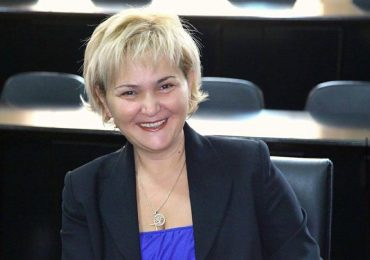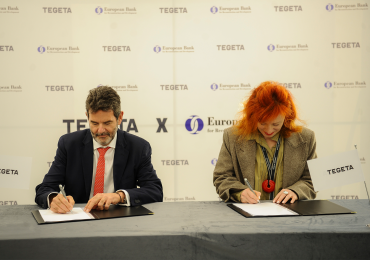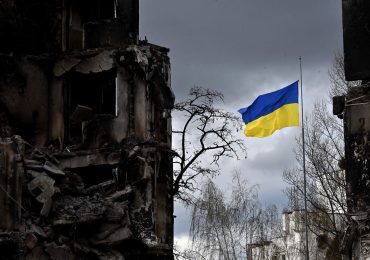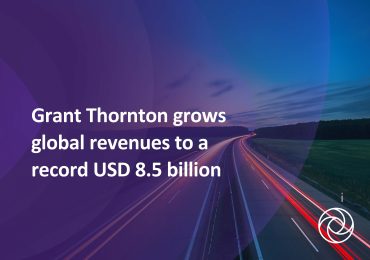Salome Janelidze, member of the board of Energy Learning Center of GNERC speaks about elimination of energy poverty:
“Despite advancements in technology and the rapid growth of renewable energy sources, energy poverty continues to be a significant global challenge. This issue of energy inequality transcends geographical boundaries, impacting millions in both developed and developing nations. According to the International Energy Agency, around 775 million people globally lack access to electricity. Energy poverty encompasses not just the physical availability of energy services, but also their affordability. The European Green Deal has further broadened the concept of energy poverty, emphasizing a fair and inclusive energy transition. This involves providing essential support to consumers in need during the shift from fossil fuels to renewable energy sources, ensuring that the transition is equitable for all.
Economic development is significantly hindered without access to energy. Moreover, in extreme weather conditions, energy access can become a critical factor for survival. The Russia-Ukraine war, leading to skyrocketing energy prices, left 40 million Europeans unable to adequately heat their homes in the winter of 2022. This situation resulted in an estimated 68,000 deaths, as reported by The Economist.
The European Commission’s recent recommendation identifies three primary drivers of energy poverty: low income levels, high energy costs relative to household budgets, and poor energy efficiency in buildings and appliances. Additionally, various factors, such as geographical and climatic conditions, gender, age, and health status, can increase vulnerability to energy poverty. These complexities highlight the need for multifaceted solutions that address both the immediate and systemic aspects of energy poverty.
Social tariffs and energy vouchers are common tools used to address energy poverty, particularly effective for providing immediate relief during crises. However, these measures can distort energy markets in the long term by failing to offer appropriate price incentives to consumers. While monetary assistance is relatively effective — enabling consumers to afford energy while also encouraging reduced consumption through the retention of real, market-based energy prices — it alone is insufficient for achieving energy equity. A multidisciplinary approach is necessary, one that considers social, energy, and climate-related aspects. It’s important to implement measures that empower consumers over the long term and address the fundamental causes of energy poverty. This approach should aim not just to provide temporary relief, but to create sustainable solutions that enable individuals and communities to overcome energy poverty in a lasting and meaningful way.
The legal framework in Georgia lacks a specific definition for energy poverty, resulting in the absence of precise data on the prevalence of energy poverty within the country. The study conducted by the Energy Community Secretariat in 2021 estimated the upper bound for energy poor households in Georgia at 24.6%. However, according to the draft Integrated National Energy and Climate Plan of Georgia, approximately half of the population is living in conditions of some sort of energy poverty. Energy poverty in Georgia is further highlighted by a survey conducted by GeoStat, revealing that over 43% of households only heat living spaces of 30 m2 or smaller during colder periods. Additionally, the majority of these dwellings were constructed before 1990, leading to poor energy efficiency and performance.
To protect vulnerable energy consumers in Georgia, a range of support mechanisms are implemented. These include direct subsidies for socially vulnerable groups, residents of mountainous areas, conflict zones, and families with multiple children. Additionally, in the electricity sector a step tariff scheme is applicable, foreseeing the a lower tariff band for consumption up to 101 kWh. For natural gas, the tariff is subsidized by the State for all households. Furthermore, European mechanisms ensuring energy access are also adopted in Georgia. This includes the universal supply of electricity and public service supply of natural gas, ensuring services are provided to consumers under regulated conditions. Moreover, a supplier of last resort is established to prevent consumers from being left without electricity or natural gas supply.
The National Energy and Water Supply Regulatory Commission of Georgia has introduced additional mechanisms to protect vulnerable consumers from interruptions in electricity and natural gas supply. Electricity supply cannot be disconnected for pensioners until the 16th of the calendar month, and for socially vulnerable consumers, those receiving subsistence or reintegration allowances, as well as for consumers with a social package and parents with multiple children, disconnection is prohibited until the 22nd. These dates correspond with the pension and allowance disbursement schedule. Furthermore, if cutting off electricity or natural gas supply due to unpaid service fees could harm human health or pose a life threat, a reasonable extension for payment is granted. Additionally, the regulator and courts have established a practice where utility services continue for individuals in ongoing property disputes, ensuring access to essential services until the dispute is resolved.
Despite the existing support mechanisms in Georgia, there is a need for a coordinated strategy and approaches tailored to the complex nature of energy poverty. Firstly, it is crucial to define energy poverty clearly, as this is essential for accurately assessing the problem’s scale and context. Priority should be given to implementing energy efficiency measures, which can substantially reduce the energy needed for heating and cooling homes. In addition, energy-saving investments by energy service providers should be encouraged.
Introducing technological innovations, such as smart meters, more broadly is crucial. These technologies enable consumers to effectively monitor and control their energy consumption and take advantage of time-of-use tariffs. Additionally, since energy-poor consumers often lack the resources for self-generation, community-based initiatives and localized energy projects, like energy cooperatives, are vital. These initiatives not only facilitate access to energy but also bolster local economies.
Combating energy poverty is a challenging yet essential endeavor. It demands a holistic approach that caters to the immediate needs of consumers and tackles the underlying causes. Access to energy is not a luxury, but a fundamental necessity for maintaining a decent standard of living. Through effective measures, the right to access energy can be secured for everyone, ensuring that this basic need is met universally“.












